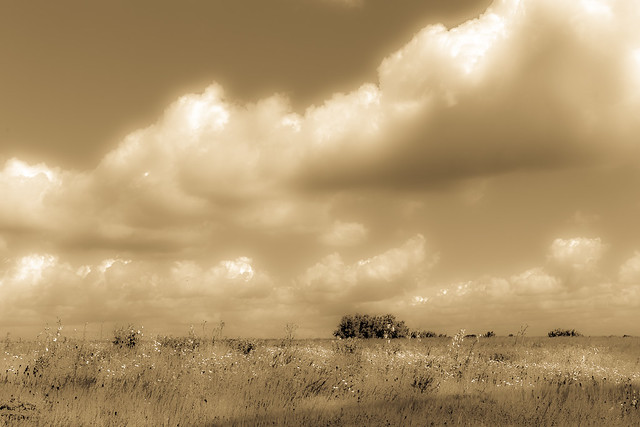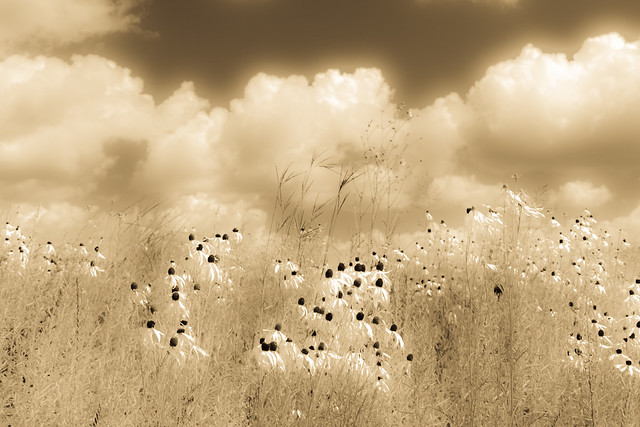Flower Mandala – Queen Anne’s Lace
Grounded, Fiery, Drought and Ice – A Prairie Survival Guide to Beauty
Survival
Prairie survives the extremes.
Frigid winter, forty below, snow cover measured in feet
and blazing midsummer heat, a hundred degrees and more.
Tolerance to the extremes; hallmark of survival.
And always, always, the winds blow, fierce,
plants loose, nimble, they tolerate the constant forces.
Grasses, shrubs and forbs, some eight or ten feet high,
bend to the earth and still they survive,
not only survive, they thrive in these extremes.
Raging fires only strengthen the prairie. Re-birthing,
it knows survival when left to its natural course.
Let it burn, let it burn, fiercely burn; it seeds the earth.
The fire sustains.
Extra-ordinary, these plants. With sparse rain,
summer drought, the prairie conserves,
exposing only the most essential.
Two thirds hidden, it protects – deep-rooted,
stretching far into the darkest of depths.
Grounded and firm in their intention to hold on,
sucking moisture from the ages. Satiated.
Evolution’s choice, managing on just enough.
Just enough.
Survival.
Exploring the Prairie – Reconnecting with a Nearly Lost Habitat
There was a day when the wind blew free and strong off the Gulf of Mexico and onto the prairies.
These vast grasslands offered no trees or mountains to stop the breeze and it blew from what is now Texas northward for 2,000 miles to the Arctic forests of Alberta.
The wind whipped the mighty land of grass into undulating oceans of green.
It blew dust into the eyes of a million buffalo and grizzled hair of the antelope. It whistled and whirled through a thousand prairie dog towns and rocked meadowlarks on their slender perches.From the lands of the Blackfoot, Hidatsa and Pawnee to the domain of the Cheyenne, Kiowa and Comanche, the wind blew and the sun shone above. This was the prairie.
Then the ocean breezes carried Europeans to this new land. A million square miles of grassland became a million square miles of checkerboard grain fields and grazing lands.
The wind erased the last trace of the wandering buffalo and the native Indian who followed it relentlessly.
Today, the fences of zoos confine the former denizens of the grassland, and paved highways pass through the sterile lands of Indian reservations.
The plants of the prairie today can be seen only in forgotten corners of grain fields, along unused roadsides, or in a tiny tract of a university arboretum.
What the prairie farmer could not plow he used for his cattle, which ate the tender stalks of the tall grass and allowed it to be replaced by weeds and dust.
The wind still blows free, but it finds a different land today. The prairies are gone.
~ Richard Nelson, from The Prairie Primer by Stan Nichols, Lynn Entine and Evelyn Hines
~~~~~~~~~
And so begins my prairie explorations. Photos are from Pope Farms Conservancy, one of the prairie restorations re-establishing a few parcels of prairie land. I am grateful for the mighty efforts of the dedicated Friends of Pope Farm Conservancy — through their efforts my imagination grasps a hint of the former grandeur of the prairie oceans, I am provided with a tantalizing taste of uninterrupted prairie — one for which I will forever yearn.









